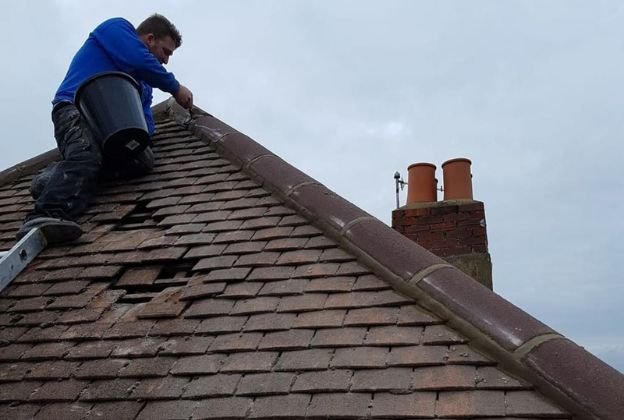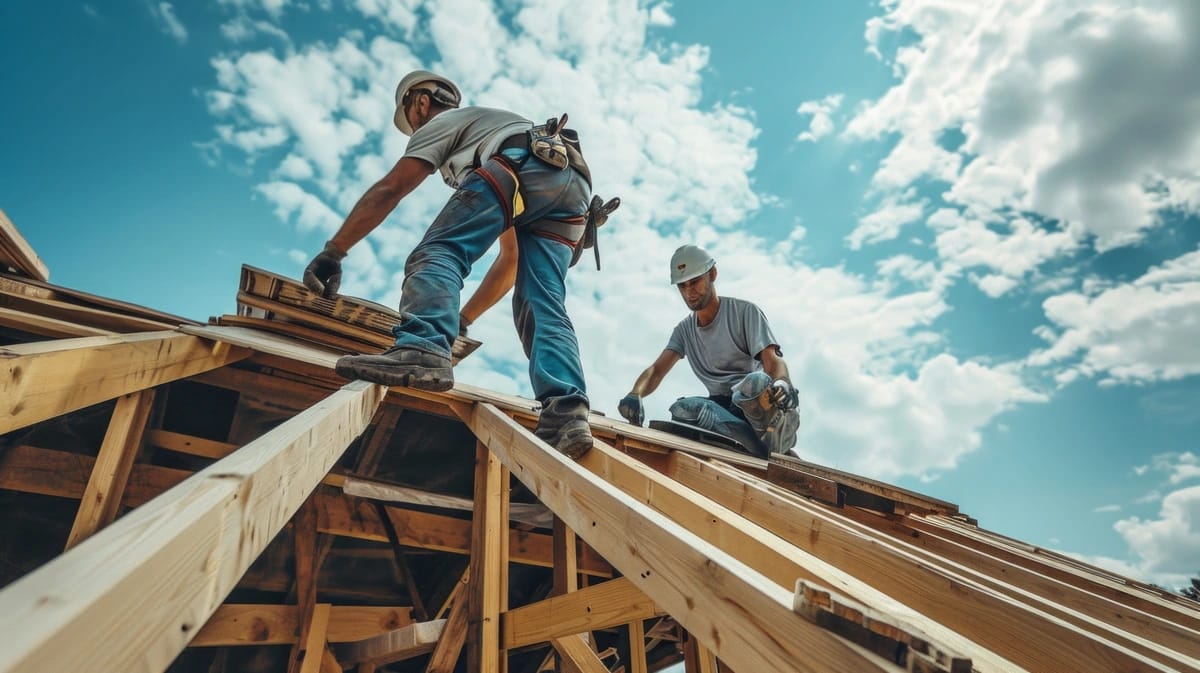Checking Out the Various Sorts Of Roofs: Which One Is Ideal for Your Home?
When thinking about the myriad kinds of roofs available, it is important to evaluate just how each choice straightens with your home's special demands, consisting of environment problems, visual preferences, and structural performance. From the timeless gable roofing that efficiently channels rainwater to the contemporary flat roof covering offering urban versatility, each design presents unique benefits and challenges. Additionally, the choice might substantially affect lasting upkeep and energy effectiveness. As you consider the finest suitable for your house, it is very important to evaluate these variables carefully, especially as some options may stun you with their potential advantages.
Saddleback Roof
Gable roofs, defined by their triangular form and sloping sides, are a popular choice among house owners seeking both visual appeal and performance. This roof covering style successfully enables for efficient water runoff, decreasing the danger of water merging and succeeding damage. Additionally, the steep inclines produce sufficient attic space, which can be made use of for storage space or even exchanged living areas.
Among the primary benefits of saddleback roofs is their capacity to withstand harsh weather. The style helps in decreasing wind resistance, making them particularly suitable for locations prone to storms. In addition, saddleback roofs can be constructed using a variety of materials, consisting of roof shingles, floor tiles, and metal, providing property owners with flexibility in design and budget plan.
From a building point of view, saddleback roofs can improve the aesthetic allure of a home, supplying a ageless and classic look. They can enhance numerous architectural styles, from traditional to modern-day styles. Nonetheless, it is necessary to take into consideration prospective downsides, such as the sensitivity to snow accumulation in cooler climates. In general, saddleback roofs continue to be a popular option due to their balance of functionality and design, appealing to a vast array of home owners.
Apartment Roofs
While usually overlooked for even more typical roof designs, level roofs supply distinct benefits that satisfy details architectural needs and modern-day style choices. These roofs are defined by their marginal pitch, permitting reliable use space, especially in city environments where making the most of square footage is vital.
One significant benefit of level roofings is their adaptability. They can be utilized as added home, such as roof yards, patios, or photovoltaic panel installments, boosting the capability of a home. In addition, flat roofing systems are normally easier and safer to navigate throughout upkeep, facilitating fixings and assessments without the challenges posed by steep slopes.
Level roofing systems can additionally be much more cost-efficient in regards to products and setup. With an easier design, they often require fewer sources, equating right into reduced labor prices. However, it's vital to take into consideration drain and waterproofing, as level roofing systems can be susceptible to merging water otherwise effectively created.

Hip Roofing Systems
Hip roofs stand out for their stylish style and structural stability, making them a prominent option amongst house owners. Identified by slopes on all four sides, hip roofings offer a healthy visual that enhances different architectural designs - roof repair oahu. The symmetrical nature of these roofing systems aids to distribute weight equally, improving security and durability
Among the key advantages of hip roofings is their capacity to stand up to severe weather. The sloped surface areas facilitate efficient water drainage and snow runoff, lowering the threat of leaks and architectural damages. Additionally, the design lessens wind resistance, making hip roofing systems much less vulnerable to wind uplift compared to other roofing kinds.


Dropped Roofing Systems
Dropped roofs, in comparison to the intricacy of hip roofing systems, use a minimalist and structured design that attract contemporary looks. Defined by a single sloping surface, dropped roof coverings are often made use of in modern architecture, yard sheds, and various other practical frameworks. This simplicity not just enhances visual allure however additionally enables for effective water overflow, making them ideal for numerous climates.
One of the primary advantages of shed roof coverings is their cost-effectiveness. With fewer materials needed and a straightforward setup process, home owners can save both time and money. The style additionally permits the unification of big home windows or skylights, advertising all-natural light and creating sizable interiors.
However, it is essential to consider the potential drawbacks, consisting of limited insulation alternatives and the requirement for mindful click now design to avoid extreme warm build-up. In addition, shed roof coverings may not blend seamlessly with conventional architecture, which can be a problem for some house owners.
Inevitably, dropped roofing systems present a trendy and sensible roof covering service for those looking for modernity and effectiveness. When selecting a roofing kind, reviewing individual practical requirements and aesthetic preferences will guide homeowners important site to the very best choice for their distinct demands.
Mansard Roofs
Mansard roof coverings, characterized by their unique four-sided style, are a hallmark of French design that incorporates elegance with capability. This architectural design features 2 inclines on each side, with the lower slope being steeper than the top one. The special setup permits for extra home in the top levels, making it a perfect choice for house owners seeking to take full advantage of usable location without broadening the structure's impact.
One of the considerable advantages of a mansard roofing is its flexibility. It can be adjusted to various building designs, from typical to modern-day, boosting the aesthetic appeal of any type of home. Additionally, the sufficient area produced under the roofing can conveniently fit dormer windows, which enable all-natural light and air flow, more boosting the comfort of the living area.
Nonetheless, possible property owners should think about the maintenance demands associated with mansard roofing systems. Installation prices may be higher contrasted to easier roofing system layouts due to the complexity of building.
Verdict
To conclude, the selection of an ideal roofing system type rests on individual demands, climate considerations, and aesthetic preferences. Each roof covering design provides special benefits, such as the performance of gable you can find out more roofings, the modern-day allure of shed roofings, and the security of hip roof coverings. Moreover, level roofings provide functionality for urban atmospheres, while mansard roofs provide added home despite higher installation prices. Eventually, a thorough examination of these elements will lead homeowners in making an educated decision.
From the classic gable roofing that efficiently channels rain to the contemporary flat roof covering offering metropolitan versatility, each design provides distinctive advantages and challenges (roof repair oahu). In addition, the design reduces wind resistance, making hip roofs much less prone to wind uplift compared to various other roof kinds
Shed roofing systems, in contrast to the intricacy of hip roof coverings, offer a streamlined and minimal style that allures to modern-day appearances. Each roof design presents special benefits, such as the performance of gable roofings, the modern-day allure of shed roof coverings, and the security of hip roofing systems. Flat roof coverings provide practicality for metropolitan environments, while mansard roofs supply extra living room despite higher installment expenses.